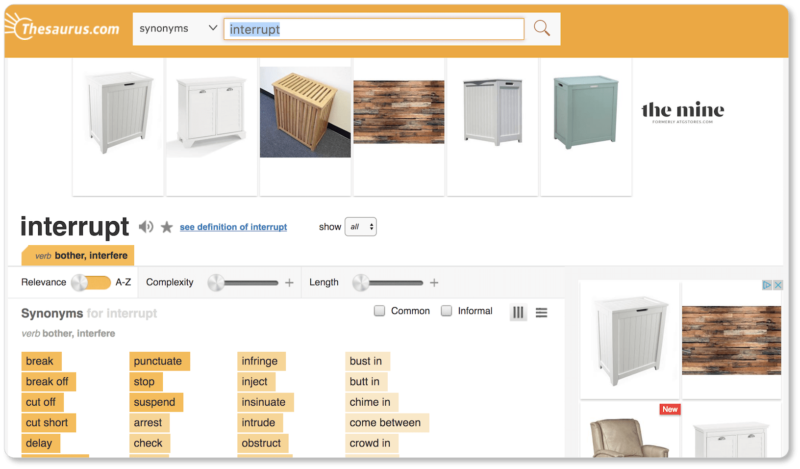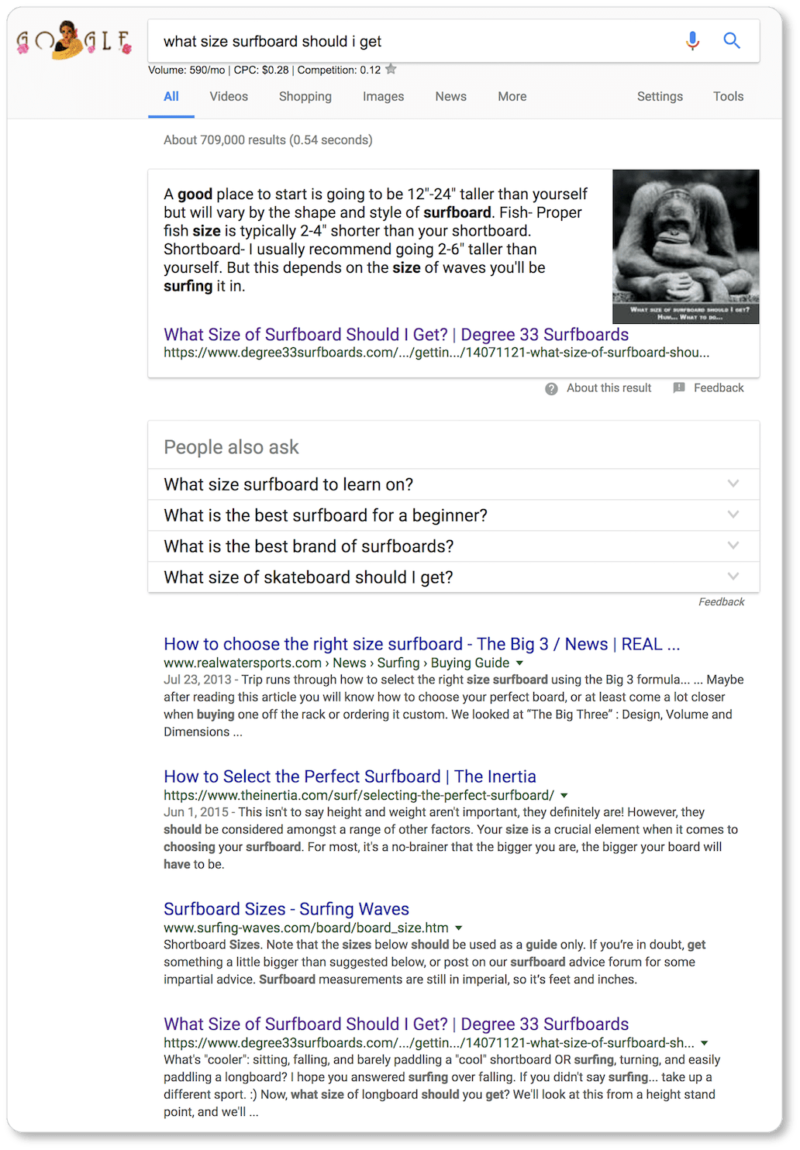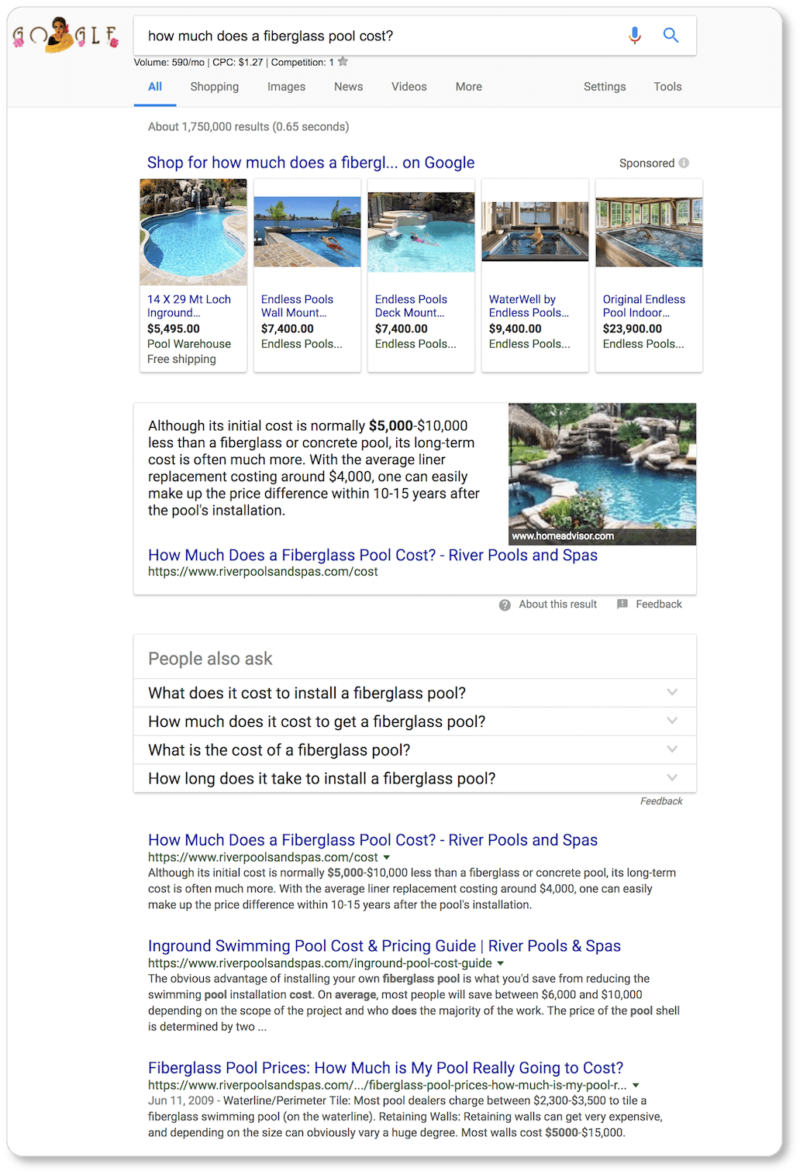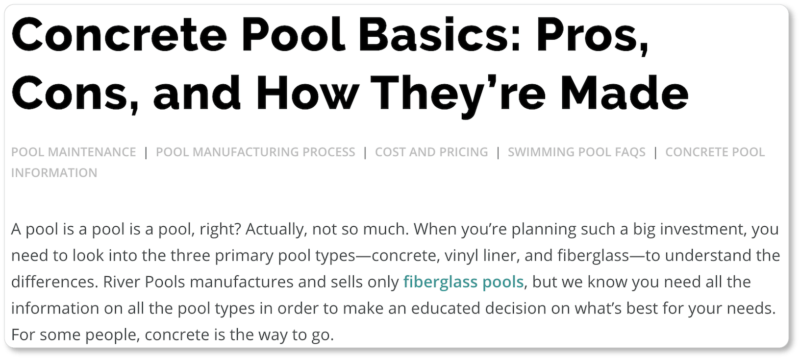- HOME
- Website Building
- Business Blogs
- Introducing the Company Blog: Your Content Marketing Machine
Introducing the Company Blog: Your Content Marketing Machine
- 11 Mins Read
- Posted on April 20, 2018
- Last Updated on October 8, 2024
- By Lauren
Blogging is an indispensable component of any business’s marketing strategy. Integrating a business blog into your marketing plan gives you greater online presence and greater online visibility in an increasingly competitive virtual market. According to Hubspot, businesses that maintain a blog generate 55% more site visitors, get 97% more inbound links, and have 434% more indexed pages available to display on a search engine results page.
And those visitors are more than just site traffic: They convert to leads, who convert to customers. In fact, 57% of businesses report acquiring customers through blog-generated leads. Businesses that blog receive 126% more leads than those that don’t, and are 13 times more likely to experience positive ROI (return on investment).
The cause-and-effect is simple: The more consistently you blog, the more likely you are to be found online. No need for advertising; no need for salespeople. Just a little thing called content marketing to drive more qualified organic search traffic to your website. (That is, visitors who have a specific problem and are actively seeking information.)
What is traditional product marketing?
Before we dive into content marketing, it’s helpful to consider the kind of marketing you grew up with and probably still see most often: direct promotions for a product or service to a general audience, using one or more of the traditional marketing mediums.
This is the kind of marketing your business is probably already doing… and it’s only relevant to a small percentage of the people who see it. That’s because traditional marketing casts a wide net in order to reach a broad audience. It includes the ads you see when you log into Facebook, the billboards you pass on your drive to work, the commercials that interrupt your music apps, and the pop-ups that appear when you’re using a search engine or reading the news online:

There are things to be said for this more traditional strategy, for sure. You reach a lot of people at once, and so your ROI can be immediate: Virtually the moment your ad goes into circulation, you can start seeing returns. There’s also no need to spend time on brand visibility and building prospect trust: Your prospects either like your product enough to buy it, or they don’t… and that’s that.
Indeed, product marketing is a valuable strategy for quick returns. But the trouble lies precisely in the word “quick”—because product marketing also has a very short life span. The majority of television commercials run for 30 seconds and then disappear into the ether; the average half-life of content on Twitter is 24 minutes; and you’ll have reached 75% of your total audience within two and a half hours on a Facebook ad. The ad goes up, it comes down; and as soon as it’s down, your business is no longer front-of-mind for your prospects.
The solution, of course, is another ad campaign with another short shelf life; so your business spends more money on more product marketing and more quick (but short-lived) returns.
What is content marketing?
Enter content marketing as an antidote to the hamster wheel of product marketing. While both practices are types of marketing (with sales as an end goal), the difference is in the focus. Product marketing focuses on valuing the product, while content marketing focuses on giving value to the prospect. It’s an approach to marketing that involves the creation and distribution of valuable material, none of which explicitly promotes the product or service, but rather stimulates interest in the brand.
In other words, the focus of content marketing is on creating content that meets a customer need. Through it, your business confirms itself as an authority by offering content that solves problems and answers questions—in short, that educates your prospects. In doing so, you bolster your brand’s reputation and attract traffic… and that traffic has a higher likelihood of converting in the long run.
Why the higher likelihood of conversions through content marketing? Why the higher volume of traffic? Traditional marketing is an interruptive strategy. You encounter it without asking for it while you’re in the midst of doing something else—as The Mine (rather ironically) did while we were looking for a synonym for “interrupt” for this paragraph we’re writing:

Content marketing, on the other hand, is a permissive strategy. Your prospects discover your content because they’re looking for it—which means they’re giving you permission to market to them. (You’re answering their questions, after all.)
Indeed, according to a study by Marketing Profs, “Customers say the biggest barriers preventing them from further engaging with brands are too much irrelevant marketing content and companies’ not offering anything beyond products/services.” Content marketing aims to dissolve those barriers by offering relevant content that privileges the prospects’ lives to the businesses’ product or service.
For example, let’s say you’ve recently picked up surfing, but you don’t own your own board yet. Wanting to equip yourself with some information before you walk into your local shop, you decide to do some research. You turn to Google, where you type in “what size surfboard should i get” (a query Google apparently receives 590 times a month). The search engine results page (SERP) looks like this:

You notice that there’s one result that shows up twice: once at the top of the page as a featured snippet (a result that Google decides to feature when it “determines that a page contains a likely answer to the user’s question”), and again as the fourth result in organic search. So you click on the featured snippet (Google’s chosen it for you, anyway), and find yourself on the blog of a San Diego surfboard company called Degree 33.
If the post’s content is relevant and useful (and it probably is—it’s the first search result Google offers, after all), you’d wonder whether or not Degree 33’s site has more information about your query. And indeed, their post gives you plenty of ways to keep researching. They offer a search box in the top right corner, a series of category buttons to the left of the page, and (as you’ll see if you click into the post) their blog copy contains interlinks to other posts about that topic:

You click on the “longboard” category button on the left, since the post you read suggested that longboards are the best boards for beginners; and you’re offered a number of other relevant blog posts—including one with more information on choosing the best beginner’s board, and another describing a technique you can start practicing:


Before you know it, you’re getting a full education in surfing by a surfboard company—without Degree 33 obnoxiously promoting their products. Indeed, the blog post that educates you on the Turtle Roll has nothing more than an interlink to the company’s selection of longboards:

In other words, the company hasn’t explicitly attempted to sell you anything. Instead, it’s offered you valuable content and educated you as a prospect. You already appreciate Degree 33 for this; and you may very well subscribe to their blog—which means getting regular updates with even more valuable, educative content from the company.
Over time, you may become a loyal reader, and—when it’s time to buy your first, or second, or third board—a loyal customer. That’s Degree 33’s reward for demonstrating their authority, and for prioritizing offering valuable content over quick sales.
The upside to content marketing
Though it takes time and energy, content marketing is far more cost-effective than traditional marketing is. While it doesn’t guarantee immediate returns, it does have the potential to show significant long-term results, because—unlike product advertising, which is only useful for as long as you pay for it—the content continues to live online and (ideally) remains relevant to your prospects.
In fact, according to Demand Metric, content marketing costs 62% less than traditional marketing—and yet it generates approximately three times more leads than traditional marketing.
Perhaps most importantly, content marketing allows you to build relationships with prospects and customers in a way that traditional marketing simply can’t. Through a long-term commitment to valuable content creation, you’ll build and solidify brand visibility and trust—as well as customer retention rates.
Hopefully it makes sense, then, why a successful blogging strategy for your business comes down to one thing: consistently creating value for your customers and prospects. “Value” might mean educating a prospect about your industry, helping them run their business better, teaching them how to be healthier, showing them how to master a skill, and so on. In some cases, “value” can also mean entertainment. And all of these can be offered in your blog.
For example, let’s think about the content you’re reading right now.
Zoho Academy is our answer to content marketing: long-form, comprehensive, educational pieces organized into an interconnected archive that addresses a series of discrete business needs. This knowledge base includes articles that go into great detail about the underlying strategies behind website design and content creation. We want people to read this content, bookmark it, and return again later to pick up where they left off. We want readers to remember us and think positively about the Zoho brand as a result of this exchange. Our hunch is that users will appreciate the care and thoughtfulness of these pieces, and start to see how that care and thoughtfulness is reflected in our products.
As a test of the job we’ve done, think about your own experience of reading this content… Do you feel more positively disposed toward Zoho? Are you taking us more seriously? Will you remember us? If the answer to any of these questions is “Yes,” then this content has done its job.
Hopefully, by now, it’s clear that your prospects will be receiving the benefits of your blog’s content marketing efforts. But the benefits of maintaining a consistent blogging practice for your business are also significant. (We mentioned a few of them above, but they’re worth repeating):
- it drives both new and returning visitors to your website
- it helps establish you as an authority in your field, growing your prospects’ trust and your company’s reputation
- it generates brand awareness and functions as passive sales messaging
- it generates leads and sales, supporting business growth
- it increases top-of-mind awareness (consistency of posting is key here)
- it increases customer/visitor engagement and invites social media shares
- it’s great for search engine optimization (SEO)
This list should give you an absolute sense of why a blog is an invaluable component of your business website. But you don’t just want to “host a blog”; you want an effective marketing tool that supports your larger content marketing strategy.
In other words, you want a blog that will subtly help your readers recognize how much they need your product or service.
Content marketing case study
Above, we considered an example of content marketing—Degree 33’s blog—from a user’s perspective. Now let’s turn the table and look at content marketing from a content creator’s perspective.
Marcus Sheridan of River Pools and Spas has used his blog as a content marketing goldmine in a remarkably successful way. In a 2013 interview with the New York Times called “A Revolutionary Marketing Strategy: Answer Customers’ Questions,” Sheridan describes how, in the midst of the financial crisis, his pool company had to stop spending $250,000 a year “on radio, television, and pay-per-click advertising.” Instead, the company began attempting to generate sales through “informational blog posts and videos”—in other words, through content marketing.
Sheridan’s strategy? Begin with customer questions. (This is, after all, the language people use in their search engine queries.)
The question Sheridan answered in his first blog post is one he says pool installers hate to answer until the prospect is in the store: how much the pool will cost.
But answering the question no one else wanted to answer turned out to be the best thing Sheridan could have done. “Within about 24 hours of writing that article,” he says, “it was No. 1 for every fiberglass-pool, cost-related phrase you could possibly type in. And because I have analytics, so far to this day, I’ve been able to track a minimum of $1.7 million in sales to that one article.”
Sheridan wrote that blog post in 2009. In 2018, it’s still the first result displayed in a Google search when we type in “how much does a fiberglass pool cost?” Indeed, River Pools and Spas claims the first three results for that question (as well as Google’s featured snippet)—and Sheridan’s 2009 post was still receiving comments as we were putting together this content:

The takeaway? Your blog—as part of your content marketing strategy—needs to answer your prospects’ questions if it’s going to build their trust.
River Pools and Spas’ story illustrates that you shouldn’t worry about being too specific when writing about your niche. Remember that they’ve already made $1.7 million in sales off a single blog post about the cost of one type of pool—and they’ve managed to regularly maintain their blog in a niche industry ever since.
How have they done this? By occasionally writing a bit outside their niche. One of the things we love about River Pools and Spas’ blog is that their posts even answer questions customers have about products they don’t manufacture, such as concrete pools. (It’s worth your while to read the opening paragraph below):

Why is this strategy so great? We can think of at least four reasons:
- It helps further establish River Pools and Spas as an authority—not just in the fiberglass pool industry, but in the broader pool industry. Even though River Pools and Spas doesn’t make concrete pools, they can clearly tell you everything you’d want to know about them. That looks real good for the company.
- It suggests to prospects that the company cares more about educating its readers than it does about making a quick sale. There’s a sense of genuine generosity in the line “we know you need all the information on all the pool types in order to make an educated decision on what’s best for your needs.” River Pools and Spas wants happy customers—regardless of whether they’re their customers. If their goal is to increase trust in their brand, they’ve succeeded here.
- It means that when prospects type “concrete pools” into a search engine, River Pools and Spas’ blog (and website) will be displayed in the search engine results—even though they don’t sell concrete pools! This gives them a chance to capture and convert an even larger segment of prospects.
- From a financial perspective, this means more than an increased likelihood of conversions from prospects who initially intended to buy a concrete pool (but ended up with a fiberglass one thanks to the company’s remarkable content marketing). It also means they’ve spent nothing—save a few hours of their time—on this strategy, allowing the business to redirect their marketing spend.
Starting by answering your customers’ questions—even if they’re not about your product—is an excellent way of identifying both your blog’s goals and your audience. After all, it’s precisely those questions that will lead them to the search engines… so why not already be there, waiting for them, with some answers?
The two most important things you’ll have to keep front-of-mind while creating your blog content are your audience and your SEO efforts. Once you figure out how to strike a balance between the two, you’ll have made both your prospects and the search engine crawlers very happy. In the next section, we delve into the first of these concerns: determining your reader persona—including their questions, pain points, values, and needs.